Relativistic Applications
 |
Special-Relativistic Polygon Rendering with Blender Special-Relativistic Polygon Rendering is a straightforward method to show what an observer moving with a velocity close to the speed of light would see.
|
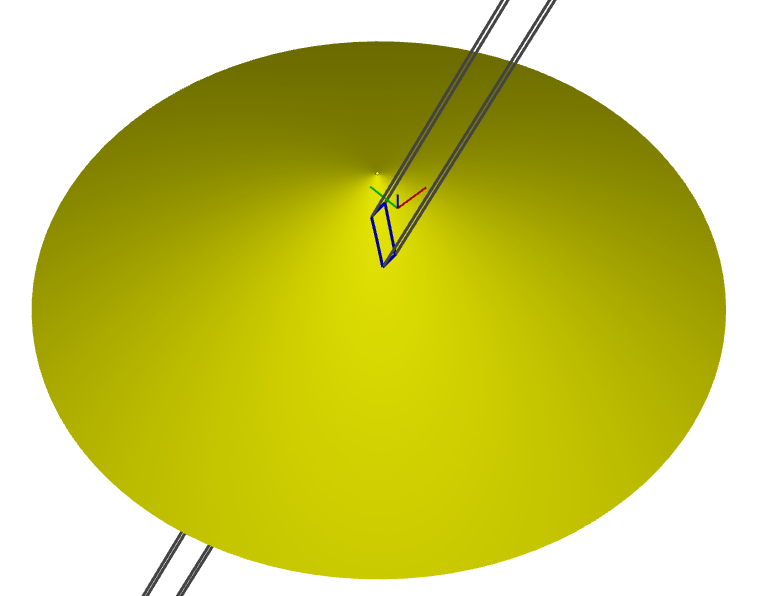 |
2+1D Minkowski Diagram The Minkowski diagram is a valuable tool to explore the Lorentz transformations of Special Relativity and their unfamiliar conclusions about space and time. To understand the visual appearance of moving objects, a 2 + 1D diagram could be used. |
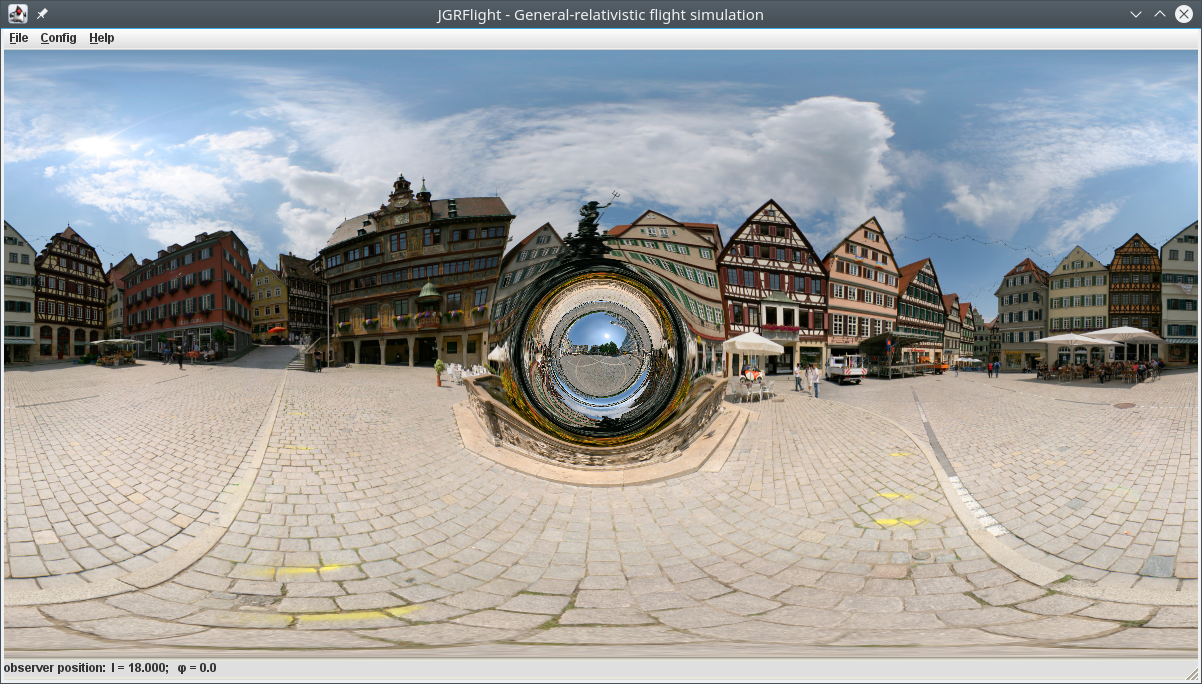 |
Image-based general-relativistic visualization The ego-centric or first-person visualization is a valuable tool for an introductory course in General Relativity as well as for public outreach to provide a deeper understanding of the geometric distortion effects due to curved spacetime. The image-based technique restricts to scenes where all objects can be considered to be infinitely far away such that one has to deal only with panorama images. |
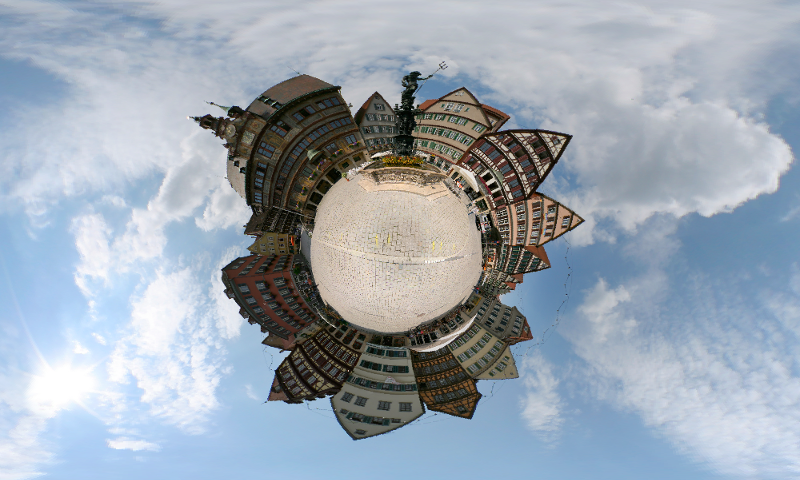 |
Image-based special-relativistic visualization This is a WebGL application to demonstrate the special-relativistic aberration effect for an observer moving close to the speed of light. |
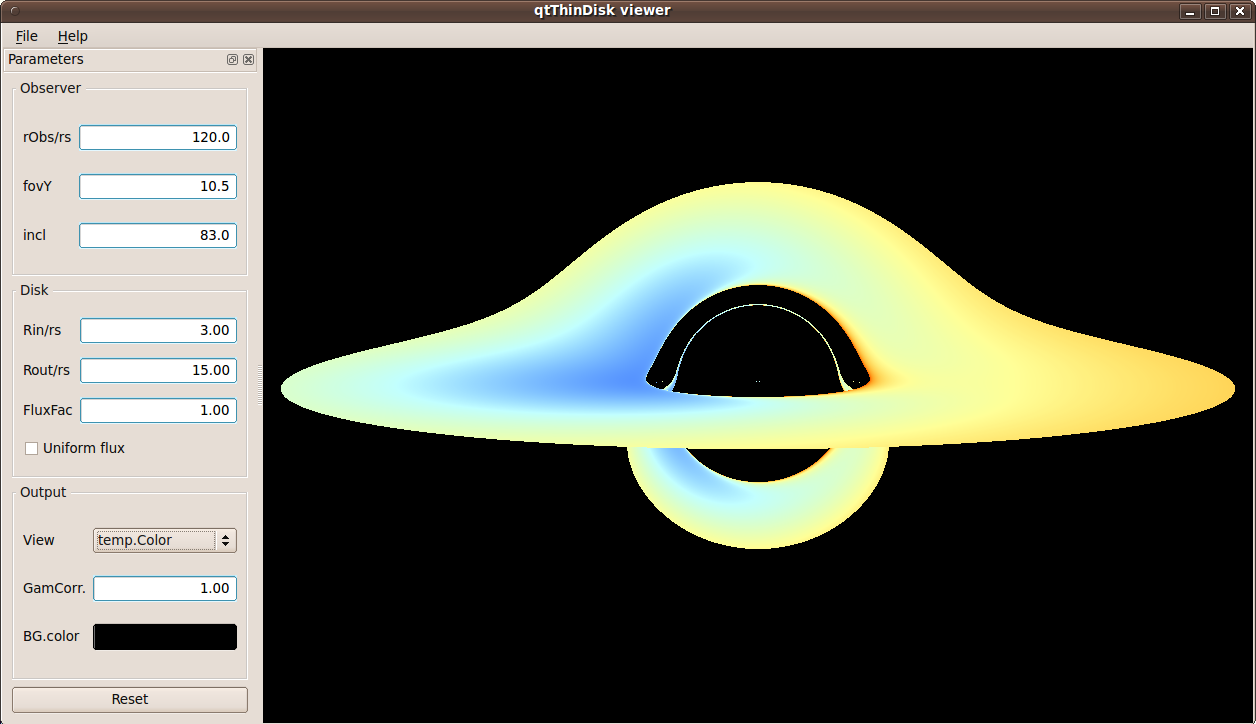 |
Interactive visualization of a thin disc around a Schwarzschild black hole In this paper, we present how the visual appearance of a thin disc around a Schwarzschild black hole can be determined interactively by means of an analytic solution to the geodesic equation processed on current high-performance graphical processing units.
|
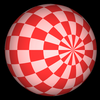 |
GeoViS — Relativistic ray tracing in four-dimensional spacetimes The optical appearance of objects moving close to the speed of light or orbiting a black hole is of interest for educational purposes as well as for scientific modelling in special and general relativity. The standard approach to visualize such settings is ray tracing in four-dimensional spacetimes where the direction of the physical propagation of light is reversed. GeoViS implements this ray tracing principle making use of the Motion4D library that handles the spacetime metrics, the integration of geodesics, and the description of objects defined with respect to local reference frames. |
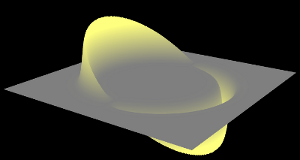 |
Detailed study of null and time-like geodesics in the Alcubierre Warp spacetime The geodesic equation of the Alcubierre warp spacetime[1] is converted into its non-affinely parametrized form for a detailed discussion of the motion of particles and the visual effects as observed by a traveller inside the warp bubble or a person looking from outside. To include gravitational lensing for point-like light sources, we present a practical approach using the Jacobi equation and the Sachs bases. Additionally, we consider the dragging and geodesic precession of particles due to the warp bubble. |
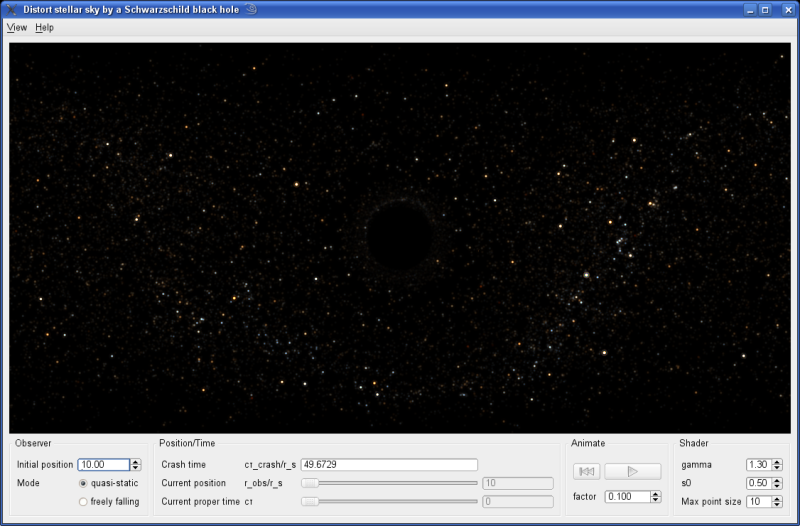 |
Distortion of the stellar sky by a Schwarzschild black hole The optical appearance of the stellar sky for an observer in the vicinity of a black hole is dominated by bending of light, frequency shift, and magnification caused by gravitational lensing and aberration. Due to the finite apperture of an observer's eye or a telescope, Fraunhofer diffraction has to be taken into account. We have developed a Qt application which enables the user to interactively explore the stellar sky in the vicinity of a Schwarzschild black hole. |
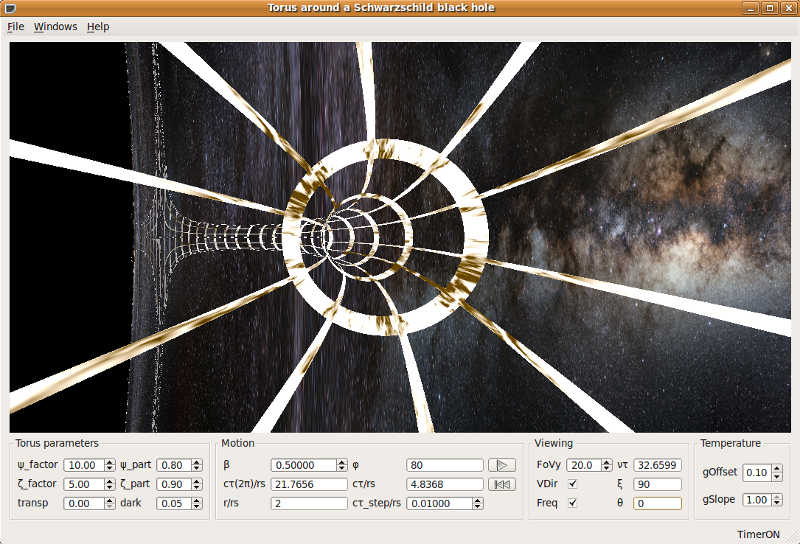 |
Visualizing circular motion around a Schwarzschild black hole An observer who wants to move on a circular orbit around a Schwarzschild black hole with a constant but arbitrary velocity must compensate the gravitational and centrifugal acceleration to stay on this orbit. Depending on the radius of the orbit and the velocity, the local reference frame of the observer undergoes a geodesic precession. In this article, we will describe the details of such a circular motion and we will present an interactive application that shows what the observer could see. |
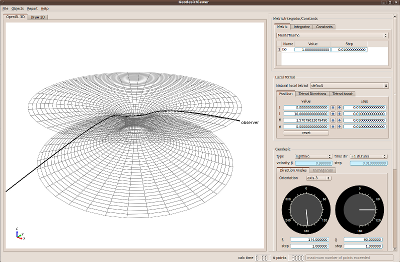 |
GeodesicViewer — A tool for exploring geodesics in the theory of relativity The GeodesicViewer realizes exocentric two- and three-dimensional illustrations of lightlike and timelike geodesics in the general theory of relativity. By means of an intuitive graphical user interface, all parameters of a spacetime as well as the initial conditions of the geodesics can be modified interactively. This makes the GeodesicViewer a useful instrument for the exploration of geodesics in four-dimensional Lorentzian spacetimes.
|
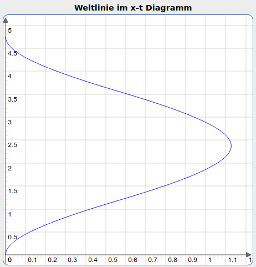 |
A trip to the end of the universe and the twin "paradox" In principal, the twin paradox offers the possibility to go on a trip to the center of our galaxy or even to the end of our universe within life time. In order to be a most comfortable journey the voyaging twin accelerates with one earth gravity. We developed some Java applets to visualize what both twins could really measure, namely time signals and light coming from the surrounding sky. Project by Thomas Müller, Andreas King, Daria Adis A recoded version can be found here (german only). |
